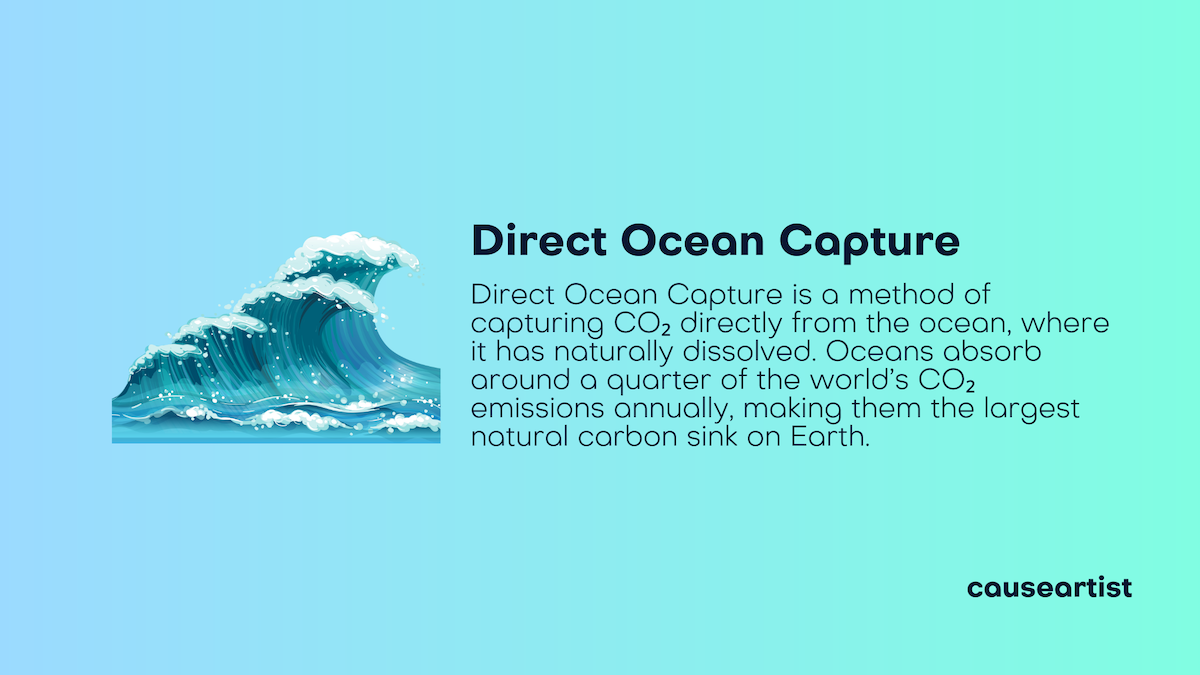Direct Ocean Capture (DOC) is gaining attention as an innovative solution in the fight against climate change. By removing carbon dioxide (CO₂) directly from ocean waters, DOC technology offers a new way to reduce greenhouse gases and mitigate the effects of global warming.
This post will explore what Direct Ocean Capture is, how it works, and why it’s an essential tool in our carbon reduction toolkit.
What Is Direct Ocean Capture?
Direct Ocean Capture is a method of capturing CO₂ directly from the ocean, where it has naturally dissolved. Oceans absorb around a quarter of the world’s CO₂ emissions annually, making them the largest natural carbon sink on Earth.
By extracting CO₂ from ocean waters, DOC helps decrease the amount of atmospheric CO₂, reducing the greenhouse effect and promoting a healthier planet.

How Does Direct Ocean Capture Work?
Direct Ocean Capture technology involves a process that filters seawater to extract dissolved CO₂.
Here’s a basic breakdown:
- Capture and Extraction: Ocean water is processed through systems that remove dissolved CO₂ using chemical reactions or electrochemical methods.
- CO₂ Conversion: The extracted CO₂ is then separated and can be stored or utilized in various industries, including sustainable fuels or materials.
- Releasing “De-carbonated” Water: The water, now with a reduced CO₂ concentration, is returned to the ocean. This creates a “pull” effect where the ocean can absorb more CO₂ from the atmosphere.
DOC effectively speeds up the ocean’s natural carbon absorption process, creating a cycle that continuously draws down CO₂ levels from the air.
Why Is Direct Ocean Capture Important?
With climate change accelerating, reducing CO₂ levels is more critical than ever. Here are some of the key benefits of Direct Ocean Capture:
- High Carbon Removal Potential: Oceans contain around 50 times more CO₂ than the atmosphere, offering significant capacity for carbon removal.
- Reduces Ocean Acidification: Excess CO₂ in ocean water leads to acidification, harming marine ecosystems. DOC can help restore balance and protect marine life.
- Scalable Solution: DOC can be deployed globally and scaled up to meet the rising demand for carbon removal.
Comparing Direct Ocean Capture and Direct Air Capture
Both Direct Ocean Capture and Direct Air Capture (DAC) focus on capturing atmospheric CO₂, but DOC taps into the ocean’s natural absorption capabilities, which may make it more efficient in certain contexts.
While DAC works by extracting CO₂ directly from the air, DOC leverages the ocean's capacity as a vast carbon reservoir, offering a more continuous removal process.
Challenges Facing Direct Ocean Capture
Despite its potential, DOC faces several challenges:
- Energy Requirements: The technology requires substantial energy, making sustainable energy sources crucial to its success.
- Cost Considerations: DOC technology is still in the early stages and can be expensive to implement at a large scale.
- Environmental Impact: Ensuring that DOC processes don’t harm marine ecosystems is essential for its adoption and effectiveness.
However, ongoing research is addressing these issues to make DOC a viable, sustainable, and affordable solution.
The Future of Direct Ocean Capture
With advancements in technology and growing investment, Direct Ocean Capture could play a vital role in helping to reduce global CO₂ levels.
As countries and companies look for scalable carbon capture solutions, DOC represents a promising avenue for large-scale climate mitigation.



